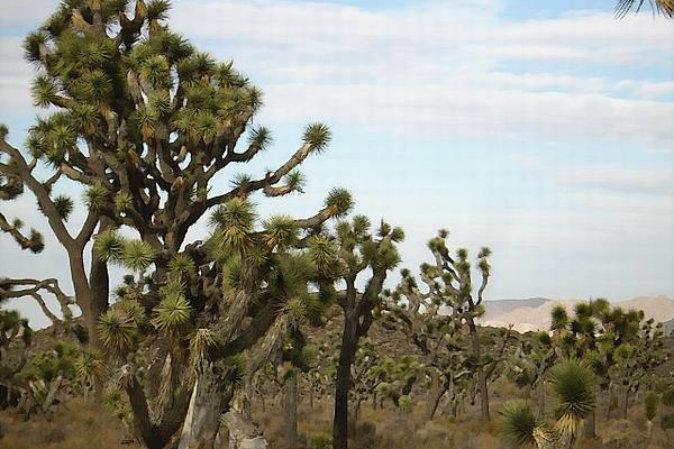Original article on www.vagabondjourney.com
I first saw a Joshua Tree when I was 19 and still loved the Irish rock band U2. They had named their latest album after the Yucca Brevifolia and pictures of it were all through the liner notes. There was was something unearthly about the plant, something striking. I could see why the Mormons came up with its name because it looked like something out of the Bible. I had been excited to get the new U2 album, but it lay forgotten on the table as I looked at those grim photographs of yuccas over and over. It was at that moment I began to feel the draw of the desert and one of the few living things it supports, the Joshua Tree.
U2 was not the only rock and roll band drawn to the Southwest, they weren’t even the first. Gram Parsons spent a lot of time at the Joshua Tree Motel. Knowing his love for the area his road crew stole his coffin and attempted to burn it out where the desert burns so many things without provocation. It seems a perverse, mystical act, equally sick and beautiful, poetic and profane. The desert brings that out in people.
That was fifteen years before U2 had their limousines take them deep into Joshua Tree National Monument. After the Irish band did it, going to the desert and loitering among the Yucca Brevifolia became a rite of passage for European bands. They'd grow beards, put on peasant blouses and Amish hats, and make a pilgrimage to the American Outback.
Seeing them trying to look like nineteenth century pioneers made me think about the real thing: the people who braved the Great Basin and Mojave and Sonoran deserts in covered wagons. The desert is unforgiving enough in an air conditioned car with water half an hour away at most; I cannot fathom how it was for people a hundred twenty-five years ago. It makes sense that people would have respected the land more back then because they understood how easily it could kill them.
The Mojave desert has two symbols, the Saguaro cactus and the Joshua Tree. As someone who loves the desert, I have had pictures of both on my walls. Whenever I got sick of the town I was in or the job I was working at or whatever else I needed to escape, I would look at those pictures and daydream. By my mid-twenties I had credit cards and could rent cars reliable enough to cross the desert in.
I saw Saguaros and Joshua Trees in person but only from a distance; I was too scared of rattlesnakes to leave the pavement. The desert was no longer a dreamland, I saw the profound beauty of the rhyolite cliffs and rock formations, but I also saw the poverty of the towns and the abandon houses. My love for those places deepened despite, or maybe because of, the darkness I came to understand they possess.
Yucca Brevifolia are protected now in some places. In some towns you have to get permission to cut them down even if they are on your property. To me, they seem to grow like weeds, especially around Lancaster and in parts of the Mojave Preserve. In a way, Joshua Trees are perfect symbols of the desert, they have this sort of gnarled, dried out beauty to them but they are home to scorpions and other dangerous things. You do not want to hug a Joshua Tree, just as you wouldn’t want to set out into the open desert without water.
That is one reason why I appreciate the Mojave the way I do; it is wild like few other places are. In Oregon, where I live, there is a lushness, everything is green and wet. If you get lost you could get caught in a sudden rain and get soaked to the bone. If you get lost in the desert you could die and only your bones would be found.
Copyright © 2014 by Vagabond Journey Travel. This article was written by Izaak Diggs and originally published on www.vagabondjourney.com

